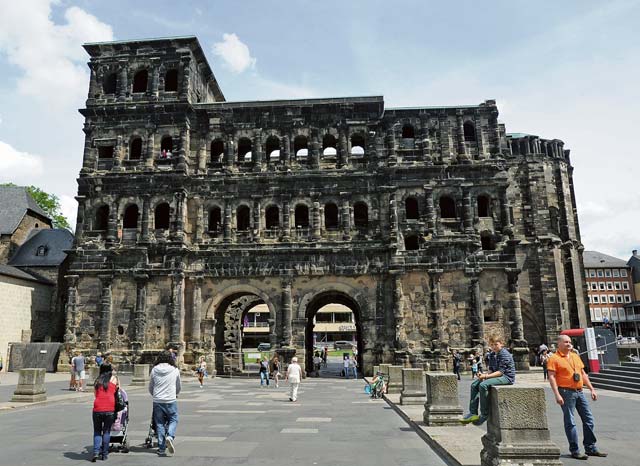
Porta Nigra, the Basilica of Our Lady Cathedral and imperial baths are just a few of the must-see attractions in Trier, Germany, and they’re only a short walk from one another.
The city, often called the oldest city in Germany, sits on the banks of the Moselle River. The city was once controlled by the Roman Empire, which constructed most of the remaining historical sites seen today. The city is now home to more than 105,000 people, making it the fourth largest city in Germany’s Rheinland-Pfalz state.
My family and I recently visited these beautiful sites, about an hour’s drive from Ramstein.
Porta Nigra, Latin for “Black Gate,” was constructed around A.D. 200 along with a 6-kilometer-long city wall. The gate received its name after small organisms blackened the once-white sandstone used to construct it. Years after Trier was seized from the Romans, the gate was planned for deconstruction in order to reuse the gate’s massive bricks for other buildings.
Of course, the gate still stands today thanks to the hermit Simeon, a former Greek monk, who lived within the gate’s towers during the 11th century. After his death and in the monk’s memory, Bishop Poppo had the gate converted into a church.
For just a few euro you can explore the gate on your own. If you understand German, there’s even a guided tour where an actor, dressed in a Roman officer’s garb, will take you through the gate in a dramatic fashion. The windows throughout the gate allow you to capture great photos of almost all of Trier.
Entering the city center through the gate doesn’t cost a thing. Great photos of the gate can still be taken from the ground, but it certainly won’t be as enjoyable as climbing the circular staircases into the heights of the towers on both sides of the gate.
Our next stop was the “Kaiserthermen,” or the imperial baths. It’s certainly more accurate to call these “enormous pools” than “baths.” Think of an NFL-size playing field, once filled with water, separated by cold, warm and hot swimming areas. These baths were also constructed during the Roman Empire for the purpose of relaxation and recreation. During our trip, we just walked the city block around the baths. For a small fee, visitors can tour the baths or experience a live play to re-enact a historical event that took place at the baths.
After leaving the baths and on our way back toward the gate, we finally stopped at the Basilica of Our Lady Cathedral. For 1,700 years, the church has stood in the heart of Trier. Its architectural flare was unmatched by any other building, wall or sculpture we saw in Trier. Each pillar, stained-glass window, pew, light fixture and mural is beautifully constructed.
So if you’re roaming through Rheinland-Pfalz, Trier is a great place to explore, and the most expensive thing you’re likely to pay for is parking.


